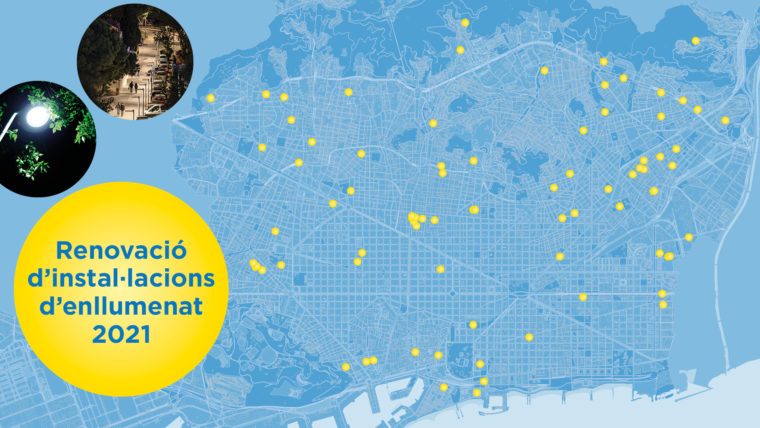Additional street lighting to improve dark spots in the city
A qualitative leap in street lighting in the city, with 7 million euros of the municipal budget to be invested to renew lighting in 80 places. Lighting will be improved in two ways: by improving the sensation of light and correcting dark spots, and also by introducing efficient technologies. The investment will be made in three ways: through the lighting renewal plan, the maintenance and modification of new urban areas, and from the budget agreement between the municipal government and the ERC municipal group, which will help speed work up.
The goal is to bolster lighting in the city and combat dark spots, in line with criteria established in the Master Plan on Lighting.
Dark spots
Recent years have seen joint work carried out with district offices to identify dark spots and find solutions from them, taking into account the gender perspective at all times. This will continue, with more action along the same lines. Measures have been taken in 136 dark points in the city in the last few years. In 71% of cases extra lighting was added, while in 29% of cases existing lighting was re-angled.
Criteria for renewing lighting
- Improved sense of light: better distribution of light thanks to the use of LEDs (white light)
- Greater uniformity of light to avoid light and dark spots
- More light on pavements and the prioritisation of pedestrian areas
- Reduction in the height of lighting for pavements (below 5 metres) and always beneath the tree canopy
- Different tone of light for road surfaces and pavements, providing warmth for pedestrians and distinguishing spaces for people and for vehicles
- Increase in telematic management, resulting in greater efficiency and optimisation of control systems and regulation
Where will work be carried out?
Work is planned in streets in all districts. Check the details of work to be carried out.
Efficient management and innovation
The new investment should bring the overall percentage of LED street lighting to 35%, increasing the current figure of 26%. Besides the renewal of lighting, the maintenance service is also essential for introducing improvements, such as regulation of on and off times according to zones and time bands, the implementation of smart lighting systems and the capacity to respond quickly in critical situations such as storms.
Barcelona currently has a centralised control system for monitoring incidents which have the most impact and ensuring that lighting works. This system also enables faults to be detected, times to be reprogrammed, luminosity to be controlled (on and off times according to the conditions for each zone) and consumption simulated for installations.
The next few years will see more progress on the renewal of control mechanisms, greater telematic management (54% of operational centres are currently managed this way) and improvements to communication systems. More self-sufficient lighting elements are also planned, such as solar streetlamps and the connection with self-consumption installations in public space.
Street lighting in Barcelona
Barcelona currently has 151,000 public lighting points, accounting for 20% of the City Council’s overall energy consumption. Notably, this percentage is much lower than the average figure for municipalities, which stands at around 50%.










